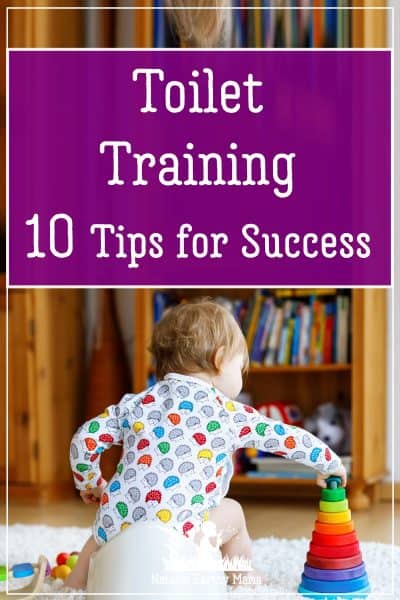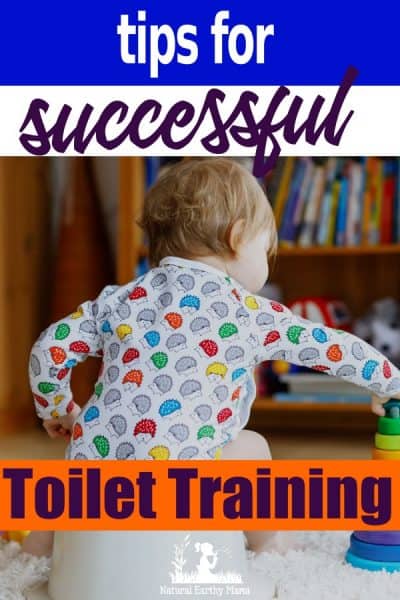 Getting your toddler out of diapers and using a toilet can be a trying time for any parent. However, these proven toilet training tips for toddlers should have your little one mastering the task in no time.
Getting your toddler out of diapers and using a toilet can be a trying time for any parent. However, these proven toilet training tips for toddlers should have your little one mastering the task in no time.
10 Top Tips To Successful Toddler Toilet Training
1. Readiness
It is crucial to establish whether your toddler is ready for toilet.
Please read: This information is provided for educational purposes only and is not intended to treat, diagnose or prevent any disease. We encourage you to make your own health care decisions in partnership with a qualified health care professional.
This post contains affiliate links, this means at no extra cost to you, we make a commission from sales. Please read
our Disclosure Statement
Every toddler is different and although they may have gained the physical skills to start training at 18 months, they may not be ready in other ways.
Starting too early can have negative consequences and could even result in a fear of the toilet.
The physical signs of readiness is being able to walk steadily as well as talk and understand what you are saying. Other signs that they are ready to start the process include:
- They may show an interest in the toilet or others using the toilet.
- Pulling their diaper down or informing you that they need to be changed.
- Longer periods of a dry diaper between peeing or pooping or waking with a dry diaper.
- Telling you that they are about to pee, are peeing or have just peed.
- Urinating a fair amount at one time rather than small amounts over an extended period.
- Regular and predictable bowel movements that occur at about the same times every day.
- Developed words for peeing and pooping and can follow simple instructions.
2. Introducing the Toilet
It is a good idea to introduce your toddler to the toilet slowly and let them become accustomed to lifting the lid, flushing and even sitting on the toilet for a few seconds or minutes at a time.
This will give them confidence to use the toilet. It may also be a good idea to use a training doll that pees and place it on the toilet to show the child that the dolly can use the toilet.
Some kids are terrified of falling in, or even just of the sound. Allow them to become accustomed to this all before you start pushing towards using it.
RELATED: Fun and cheap toddler activities
3. Using A Potty
There is some controversy as to whether toilet training should or should not involve a potty.
Most experts believe that it is best to move straight to toilet training using a toddler friendly seat and step rather than having to retrain a toddler to stop using the potty and go to the toilet at a later date.
However some children really prefer the potty or are very terrified of the toilet, in which case the potty is a good option too.
4. Using the Toilet
It is advisable to put the toddler on the toilet around the time when you expect a regular bowel movement.
Let them sit there for a while and provide them with a book to “read” or toy to play with to keep them entertained.
Don’t expect results the first couple of times but eventually he or she will go while they are on the toilet.
5. Celebrate a Success
If you are using a training doll, make a fuss over the doll after it has finished “going to the toilet”.
Do the same with your toddler and praise him or her for their success. You can even go as far as throwing a small party to celebrate their success.
6. Reward
You can also provide your toddler with a reward for going to the toilet such as a piece of candy or their favorite activity.
Some parents disagree with this.
We worked our way through a bag of jelly beans with each of the kids, when the beans were gone, I did not buy more and they were all toilet trained.

7. Follow Up
Just because your toddler has been successful once, does not mean that they are toilet trained.
You will need to consistently place them on the toilet every hour or so and ask them constantly if they need to go.
Make sure you get them to drink plenty in the first few days so there are lots of opportunities to practice.
8. Pants Vs. Pull-ups
Another controversial issue is whether to use pull-ups or pants while toilet training.
Pull-ups are great for avoiding accidents but pants provide the child with more independence and the confidence that they are a big boy or girl now that they can go to the toilet.
However, they are absorbent and sometimes it is the discomfort of wet pants that reminds them using the toilet is best.
9. Dealing With Accidents
No matter what training technique you follow or if you use pull-ups, accidents are going to happen while toilet training.
You may even catch your toddler sitting in the corner and going toilet.
It is very important not to get angry and reassure the child that mistakes happen. Take them to the toilet and then let them help clean the mess afterwards.
10. Positive Reinforcement
Talk about going to the toilet and reinforce what a good or big boy or girl your toddler is for having achieved this important milestone. You may be surprised to find him or her going on their own in no time at all.
If it is really not working for you or your child, it is OK to say, “Actually, you might not be ready for this yet.” and go back to wearing diapers for a while longer.
Night Training
Night training is not something that your child can control. Some children will be dry as soon as they start toilet training, and others still need night diapers to 6 or 7 years of age.
If your child is still bed wetting at age 7, it is good to talk to your pediatrician.
